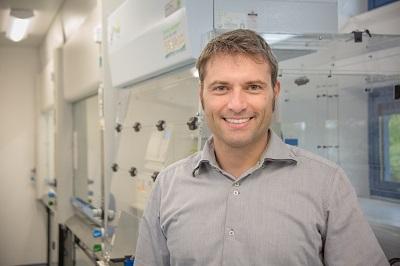
Researchers from the University of Dundee and Promega Corporation have shown how a “three-headed hydra” significantly improves efficacy in a field of chemical biology that is revolutionising drug discovery.
Targeted protein degradation co-opts the cell’s natural disposal systems to remove disease-causing proteins and is applicable to diverse therapeutic areas including oncology, inflammation, dermatology, immunology and respiratory diseases.
Degrading rather than inhibiting a target protein offers several advantages such as more efficacious drug response at lower doses, and a more surgical intervention with potentially reduced side effects and disease resistance. The first compounds in this class, termed Proteolysis-targeting chimeras (PROTACs), are being trialled as candidate medicines against various cancers and progressing through clinical trials.
PROTACs are conventionally small molecules designed with two heads, called bivalent or heterobifunctional compounds. However, new research carried out by Dundee’s Centre for Targeted Protein Degradation (CeTPD) in collaboration with biotechnology company Promega broke away from this conventional design and showed that degraders can be significantly improved by making them trivalent, i.e. consisting of three heads.
The best trivalent PROTAC designed by the researchers proved to be remarkably more potent than their bivalent predecessor compounds, showing in cellular studies stronger anti-cancer activity at a much lower dose and improved pharmacological responses over a wider dose range.
“The findings are novel because they show that three heads can be better than two in PROTACs,” said CeTPD Director Professor Alessio Ciulli. “We hypothesised that we could improve degraders by latching onto the target protein more productively. To do this, we designed trivalent PROTACs by adding an additional protein-binding ligand, in effect creating a three-headed monster that destroys cancer-causing proteins more effectively.”
Dr Danette Daniels, group leader at Promega, said, ”We took a significant risk with direction as there was a thinking in the field that going smaller is better than larger, but with this work have shown that not only are larger compounds possible, they open a new door for design of incredibly potent drugs.”
The Dundee/Promega team demonstrated that the new PROTAC works due to the combined effect of two important features of molecular recognition – avidity, which is the accumulated strength of two heads binding together the same target, and cooperativity, which is the added strength from the third head marking the target protein as expired to be degraded by the cell’s natural disposal system.
The researchers conclude that the trivalent PROTAC concept offers a new strategy that is shown to improve on many aspects of degrader drug action and could in future be applied to a wider range of protein targets. If this is shown to be the case, it raises the possibility of scientists being able to develop drugs more easily for diseases for which there are currently no effective treatments, greatly expanding the number of available therapeutics.
Professor Ciulli added, “This is the first time it has been shown that these features could be combined to enhance PROTAC mechanism of action and to boost targeted protein degradation. The new trivalent concept offers a new strategy that is shown to improve on many of these aspects of drug action. It provides hope of treating diseases previously thought to be undruggable.”
The research is published in Nature Chemical Biology.